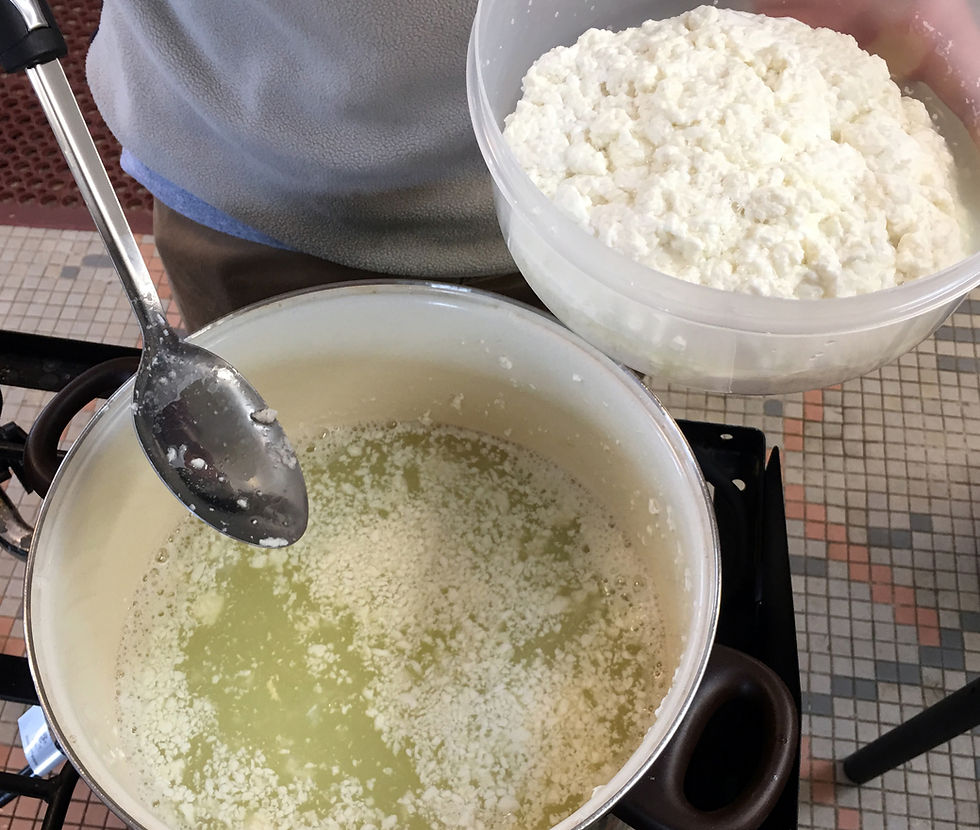Preventing Disease with Practical Hygiene
- FamilyDisasterPrep

- Feb 15, 2018
- 3 min read
Nine-tenths of our sickness can be prevented by right thinking plus right hygiene - nine-tenths of it!
Henry Miller

There are six major means of transmission of germs and disease. Maintaining a high level of hygiene is important in preventing transmission of such germs and disease.
#1 - Droplet Contact: When an infected person coughs or sneezes on another person, the microorganisms suspended in warm, moist droplets, may enter the body through the nose, mouth or eye surfaces. Such germs cause diseases such as: Bacterial Meningitis, Chickenpox, Common Cold, Influenza, Mumps, Strep Throat, Tuberculosis, Measles, Rubella, and Whooping Cough.
Prevention:
Stay at least 12 feet away from anyone who is coughing or sneezing.
Note... a sneeze can send germs up to 25 feet.
When you sneeze or cough, do so into your shoulder clothing.
Wash clothing in hot and soapy water.
Facial hair can harbor droplets.
In extreme cases wear a simple surgical mask.
#2 - Direct contact: Disease that can be transmitted by direct contact is called contagious. These diseases can also be transmitted by sharing a towel or items of clothing in close contact with the body (socks, for example) if they are not washed thoroughly between uses. Examples of such diseases are Warts, Athlete’s Foot, Impetigo, and Syphilis.

Prevention:
Wash your hands after direct contact (warm water and soap or hand sanitizer).
Leave your shoes in a designated place at the front of your home so you don’t spread germs throughout house.
In extreme cases, have a pan of bleach solution that you step into with your shoes prior to taking your shoes off and entering your home.
Frequent showering or bathing.
In extreme cases wear gloves prior to touching anything that could be contaminated.
Always wipe off a grocery cart with an antibacterial wipe that many stores provide.
Use paper towel to open door when you leave public restroom and then immediately drop it into a wastebasket.
Use as small a part of your hand and fingers or shirttail to open public restroom doors.
#3 - Oral transmission: Direct oral contact such as kissing, or by indirect contact such as by sharing a drinking glass. Examples are Cytomegalovirus infections, Herpes Simplex Virus, and Infectious Mononucleosis.
Prevention:
Wash dishes with warm soapy water and then rinse well.
Use hot water in an automatic dishwater if available.
Wait for another individual to be healthy prior to oral contact, and make sure you are healthy yourself.
#4 - Fecal-Oral transmission: Foodstuffs or water become contaminated by people not washing their hands properly before preparing food, placing food on an unclean counter top, using contaminated utensils, not cooking food thoroughly, or untreated sewage released into a drinking water supply. Examples include Cholera, Hepatitis A, Polio, Rotavirus, and Salmonella.
Prevention:
Vitally important is hand-washing after using the restroom and before preparing any food or drink.
Thoroughly sanitize all dishes, utensils, counter tops and anything else coming into contact with food.
Ensure that waste material is disposed of in a safe manner and at a safe distance from any water source.

#5 - Vector-Borne Transmissions: A vector is an organism that does not cause a disease itself but that transmits infection by conveying pathogens from one host to another. Examples of vectors are mosquitoes, ticks, rodents, birds, and pigs. Vector-borne diseases include Dengue Fever, Lyme Disease, Plague, and West Nile Virus.
Prevention:
Ensure possible vectors to do not have a ready habitat near you.
Do not provide standing water for mosquitoes.
Ensure proper disposal of food waste to prevent a source of food for rodents.
Self-inspection and frequent showers/baths are necessary to prevent ticks.
Remove ticks in a safe manner.
Wear a dog tick/flea collar outside each pant leg and shoe when hiking or working outdoors in infested areas.
#6 - Sexual Transmission: Can result in HIV/AIDS, Chlamydia, Genital warts, Gonorrhea, Hepatitis B, Syphilis, and Herpes.
Prevention:
Ensure both individuals are healthy prior to contact.
Practice safe sex practices.
Have exclusive sexual partners in lieu of multiple partners.
Condoms can dramatically reduce risks of sexually transmissible diseases (STD).

Supplies needed:
Soap and water
Towel/washcloth
Skin lotion
Comb/brush
Hand sanitizer
Toothbrush/paste/floss
Shaving equipment
Toilet paper
Portable toilet
Garbage bags
Laundry soap
Dish soap
Portable water container with spigot for sinks
3 plastic sinks for washing and double rinse of dishes
Foot powder
Rodent traps, mosquito repellent, tick protection





Comments